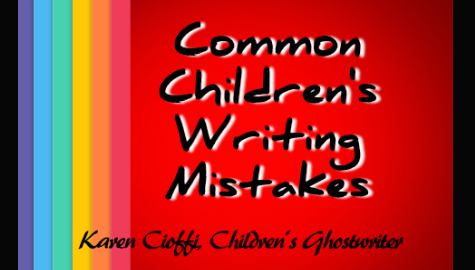I attended a webinar through Children’s Book Insider (CBI) with traditionally published children’s authors Jean Daigneau and Gloria Adams. They had some very helpful tips.
One section I found interesting was:
BIG common mistakes that authors make with children’s books.
- The number ONE most common big mistake is a weak plot.
So, what does a weak plot mean?
No conflict, or very little.
Basically…
The main character needs to have a problem. It can be internal or external, but it needs to be something that has consequences attached to it.
The conflict doesn’t need to be life or death; it may be that he figures out a way to stop a bully. Or, she figures out a way to get the bike she wants. It could even be that he was lonely and finds a friend.
It does need to be something that will get the young reader engaged.
It’s the conflict that will make the reader become invested in the main character’s journey. It’s the conflict that will motivate the reader to read to the end.
- The number two most common mistake is the lack of a story arc.
A story needs a full story arc. A beginning, a middle, and an end, and within that structure, there needs to be rising conflict.
There also needs to be a satisfying resolution to that conflict.
This is commonly known as Freytag’s Pyramid.
The story starts on the left side of the pyramid. The action and conflict climb up to the peak (the climax). Then, it’s down the right side with falling action and the resolution.
- Another big mistake is the lack of a character arc.
The character needs to grow in some way.
He needs to change in some way as a result of his journey to overcome the obstacle blocking him from reaching his goal.
The character may become kinder, happier, more confident, smarter, physically stronger, emotionally stronger, more creative, or less fearsome. You get the gist.
He shouldn’t be the same person he was at the beginning of the journey.
When you look at the character at the beginning of the story and then at the end, he needs to be different. There needs to be some kind of growth.
Some of the SMALLER mistakes or problems authors make are:
- Double tags.
Here’s an example:
Pete threw his fist in the air. “If he does that again, I don’t know what I’ll do,” he said.
This is a double tag.
It’s already established that Pete is talking because he’s noted throwing his fist in the air. The “he said” shouldn’t be included.
If you know the reader will understand who’s talking, you don’t add a dialogue tag.
- Picture books and illustrations.
If you’re writing a picture book, take the illustrations into account.
Write with them in mind. Leave enough room for the illustrator to be creative and bring the story to another level.
- Illustrator notes.
It may be tempting to try to direct the illustrator with a lot of illustrator notes but don’t do it.
Unless it’s something the illustrator wouldn’t know but needs to know, don’t mention it.
An example of this:
Your protagonist has a dog and you want it to be a specific breed and color. This is something you can note, as the illustrator certainly wouldn’t know about it.
- Candy-coating the story.
A number of my clients don’t want anything bad to happen to the characters in the story. This is especially true of picture books.
But it’s tough to have conflict if nothing bad can happen to the characters.
The best stories, even if fantasy, have realism in them.
- Unsatisfying ending.
The ending of your story is important to get right.
All loose ends must be tied up. And, especially in picture books and writing for young children, the ending must be satisfying.
The reader should go away feeling good about the story.
Another important aspect of the ending is to NOT tell the reader what the message of the story is.
The takeaway value of the story should be subtly conveyed through the story itself. Don’t hit the reader over the head with it.
Winding this up…
A good story needs it all. It needs conflict with rising action and resolution. It needs character growth with a subtle message.
The best way to incorporate all this into your story is to read a lot of traditionally published books in the genre you’re writing. Pay attention to what makes those books work.
I’m a working children’s ghostwriter, rewriter, editor, and coach. I can help turn your story into a book you’ll be proud to be the author of.
OTHER HELP I OFFER:
HOW TO WRITE A CHILDREN’S FICTION BOOK
A DIY book to help you write your own children’s book.
PICTURE BOOK, CHAPTER BOOK, MIDDLE GRADE COACHING
Four to twelve-week coaching programs.
FICTION WRITING FOR CHILDREN eCOURSE
4-Weeks / 8 Sections Guided Self-Study Mentoring Program
You can contact me at: kcioffiventrice@gmail.com. Or give me a call at 347—834—6700. (Please leave a message- I’ll get back to you as soon as I can.)



1 thought on “Common Children’s Author Mistakes, Big and Small”